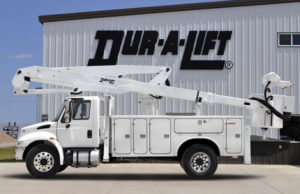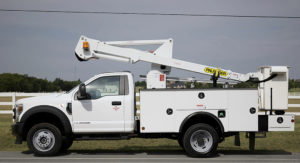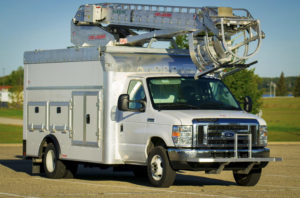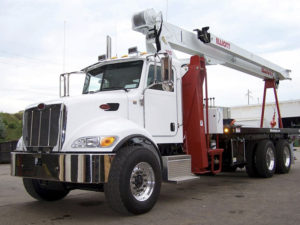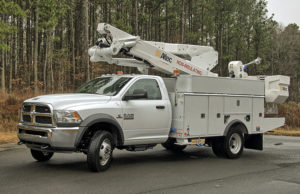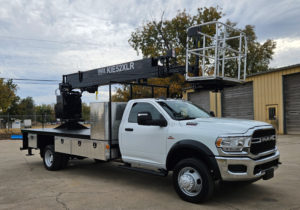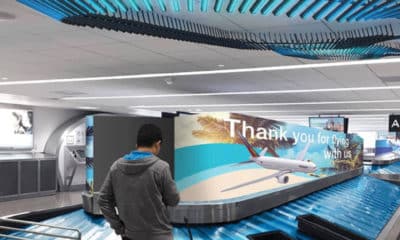FOR THE MID-TO-LARGE-SIZED signshop, a bucket and/or crane truck is a necessity. Signs only make an impact when they are seen. Whether walking down the street or driving in our cars, we tend to look at signs that are “in our faces.” Large signs are difficult to install in locations above the ground, so sign installation vehicles, typically bucket trucks, are a necessity. The designs have been around for many years and have seen developments in safety, height and aids to the installers. Are these workhorses seeing any upcoming improvements as 2024 rolls around?
Perhaps the biggest question concerns electrification. Electric vehicles (EV) are being pushed by the government (both federal and many local) as a means to reduce carbon emission and wean us away from gas, diesel and oil. Whether you agree or not, the trend is here and growing as more charging infrastructure is being built and manufacturers are converting models from gas to electric.
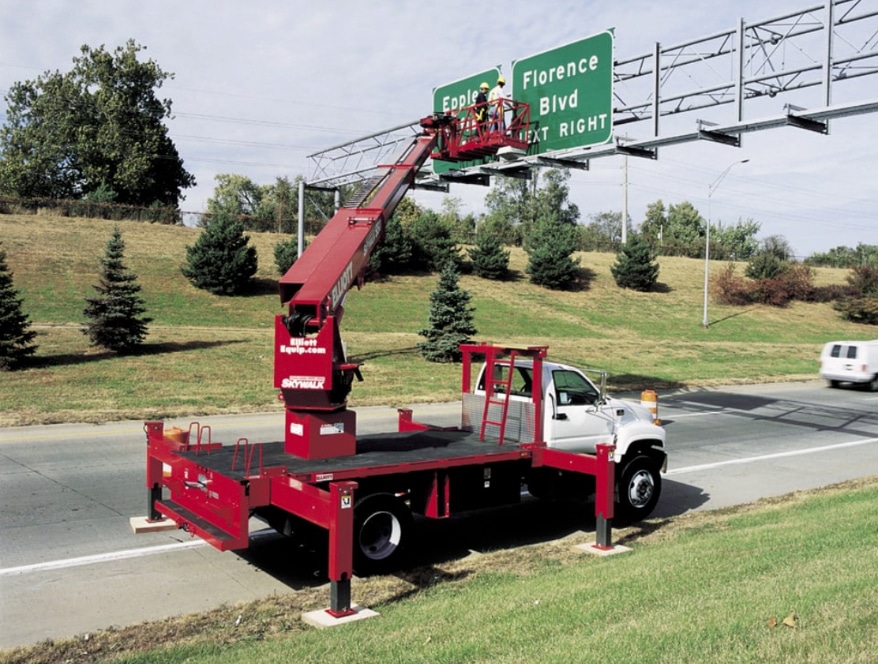
While buckets are often battery powered, we still await a completely electric install truck.
We have not seen this conversion to electric, however, for sign-installation vehicles. At least one company has announced their intention of building an electric bucket truck, but who knows if they will succeed or not. However, a fairly successful passenger car design has made strides in the installation vehicle arena. Plenty of hybrid systems that use both a gas engine and a battery motor offer consumers a significant boost in gas mileage. But how does that translate to a bucket truck? It’s not like they travel great distances every day, so where is the benefit?
In typical use, the truck is parked at the appropriate location but the engine continues to run at idle in order to power the lift’s electronics. The Power Takeoff (PTO) performs this function. While in operation, the truck is constantly burning fuel and costing you dollars. Now, a number of companies are offering ePTOs (Electric Power Takeoff) that use a storage battery to supply power to the boom and bucket while the truck’s engine is off. Typically the battery capacity can last a full day and the battery can be topped off at night at the shop. If the battery drains during installation, the truck can be fired up and switched to traditional PTO operation. Nowadays, you will find that most power company fleets are converting to ePTO. While it is an option or third-party upgrade today, it may become almost standard equipment in the future. It also reduces noise significantly, making installations a lot friendlier in crowded environments.
Another interesting innovation has a rather strange name, IoT (Internet of Things). You may already be using this technology if you have Alexa handling your home lights, or a vehicle monitoring service like UCONNECT or OnStar. It allows normally unconnected devices such as lights or cars to access the Internet. With bucket trucks, this could allow for location monitoring to fight against theft or remote monitoring of vehicle and system health. Again, this is not standard equipment but can be added to virtually any truck via third-party software and sensors.
No doubt we will see further developments in the future, but these two technologies are here today and can add value to an already pricey asset — in the case of ePTO, even save you some bucks. If you are in the market for a new truck, check with the dealer to see if these options are available.
PHOTO GALLERY (6 IMAGES)
Advertisement
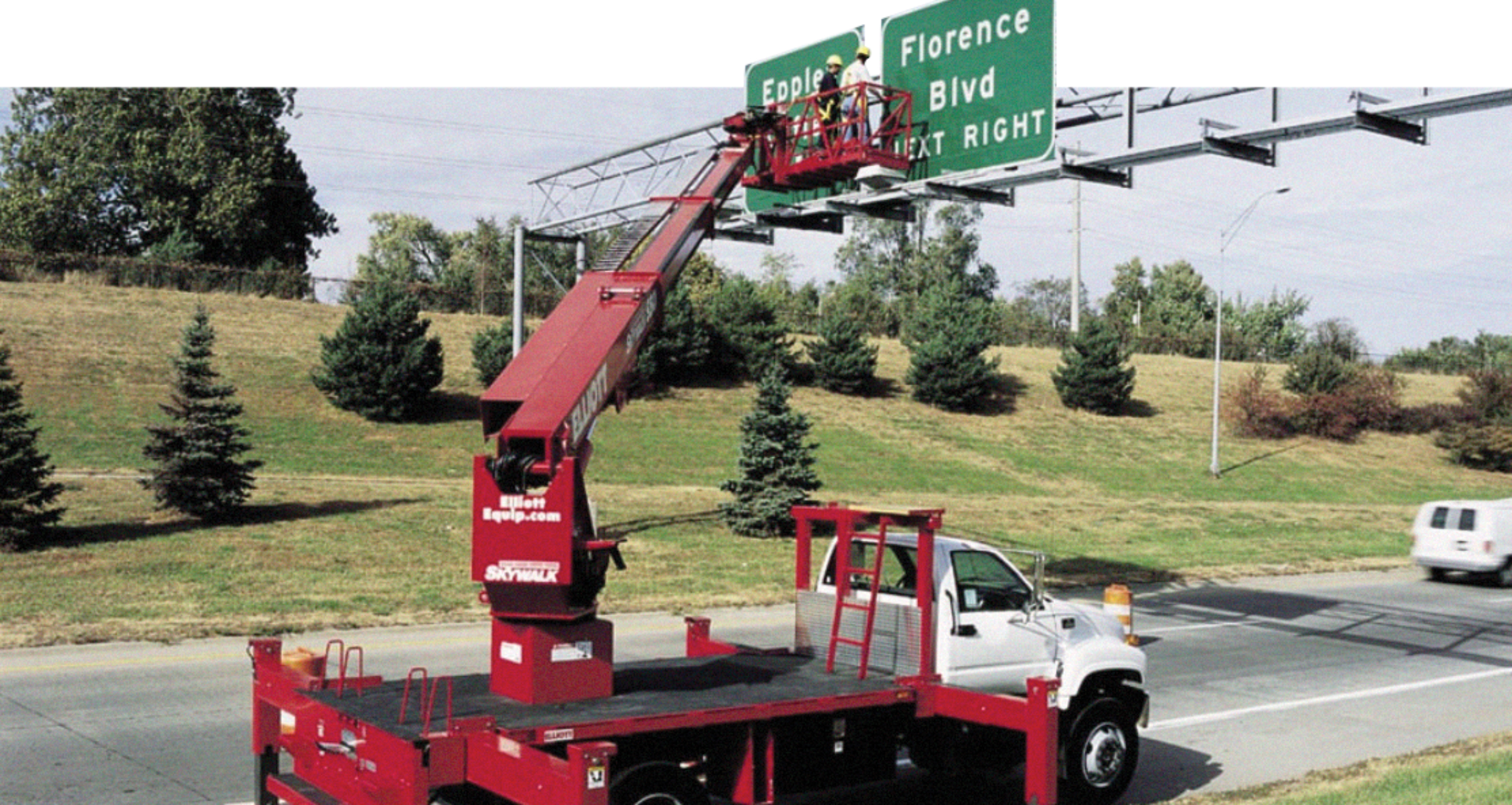

 Tip Sheet2 weeks ago
Tip Sheet2 weeks ago
 Photo Gallery4 days ago
Photo Gallery4 days ago
 Ask Signs of the Times6 days ago
Ask Signs of the Times6 days ago
 Real Deal2 weeks ago
Real Deal2 weeks ago
 Paula Fargo1 day ago
Paula Fargo1 day ago
 Benchmarks1 week ago
Benchmarks1 week ago
 Photo Gallery1 day ago
Photo Gallery1 day ago
 Women in Signs2 weeks ago
Women in Signs2 weeks ago

